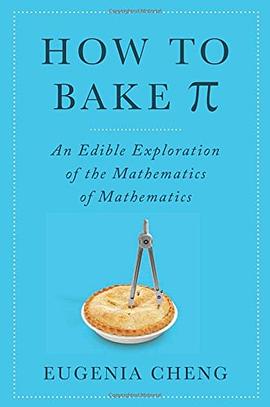How to Bake Pi
内容简介
What is math? How exactly does it work? And what do three siblings trying to share a cake have to do with it? In How to Bake Pi, math professor Eugenia Cheng provides an accessible introduction to the logic and beauty of mathematics, powered, unexpectedly, by insights from the kitchen: we learn, for example, how the béchamel in a lasagna can be a lot like the number 5, and why making a good custard proves that math is easy but life is hard. Of course, it’s not all about cooking; we’ll also run the New York and Chicago marathons, take a closer look at St. Paul’s Cathedral, pay visits to Cinderella and Lewis Carroll, and even get to the bottom of why we think of a tomato as a vegetable. At the heart of it all is Cheng’s work on category theory, a cutting-edge “mathematics of mathematics,” that is about figuring out how math works. This is not the math of our high school classes: seen through category theory, mathematics becomes less about numbers and formulas and more about how we know, believe, and understand anything, including whether our brother took too much cake.
Many of us think that math is hard, but, as Cheng makes clear, math is actually designed to make difficult things easier. Combined with her infectious enthusiasm for cooking and a true zest for life, Cheng’s perspective on math becomes this singular book: a funny, lively, and clear journey through a vast territory no popular book on math has explored before. How to Bake Pi offers a whole new way to think about a field all of us think we know; it will both dazzle the constant reader of popular mathematics and amuse and enlighten even the most hardened math-phobe.
So, what is math? Let’s look for the answer in the kitchen.
......(更多)
作者简介
Eugenia Cheng is tenured in the School of Mathematics and Statistics at the University of Sheffield in the United Kingdom. She has previously been on the mathematics faculty at the University of Chicago and is the Scientist in Residence at the School of the Art Institute of Chicago. She lives in Chicago, Illinois.
......(更多)
目录
......(更多)






